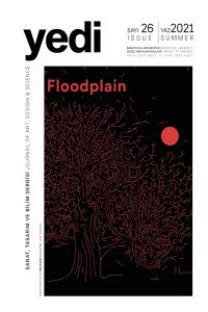Irkçılık ve Ayrımcılık Bağlamında Blackface Makyajı ve Mickey Fare Karakteri
Kölelik, Blackface, Jim Crow, Çizgi Film, Miki Fare
Blackface Makeup and Mickey Mouse Character in the Context of Racism and Discrimination
Slavery, Blackface, Jim Crow, Cartoon, Mickey Mouse,
___
- Crafton, D. (2013). Before Mickey: The Animated Film 1898-1928. University of Chicago Press.
- Craven, J. (2.27.2015). HuffPost. https://www.huffpost.com/entry/kkk-terrorist-organization_n_6764866
- Coombs, DS, and Batchelor, B. (2014). We Are What We Sell: How Advertising Shapes American Life. ABC-CLIO.
- Fievre, MJ (2021). Raising Confident Black Kids. Mango Media Inc.
- Halpern, R. and Lago, ED (2008). Slavery and Emancipation. John Wiley & Sons.
- Heide, R. and Gilman, J. (1979). Dime-store Dream Parade: Popular Culture, 1925-1955. Dutton.
- Householder, M. (19. 04. 2012). About the Jim Crow Museum. https://www.fer ris.edu/HTMLS/news/jimcrow/more.htm
- Hugill, B. (1980). Bring on the Clowns. Chartwell Books.
- Hussey, M. (2015). The Rise of the Jim Crow Era. Encyclopedia Britannica.
- Lust, A. (2002). From the Greek Mimes to Marcel Marceau and Beyond: Mimes, Actors, Pierrots, and Clowns: a Chronicle of the Many Visages of Mime in the Theatre. Scarecrow Press.
- Overdeep, M. (2019). The Reason So Many Disney Characters Wear White Gloves. https://www.southernliving.com/news/why-disney-cartoons-wear-gloves
- Patinkin, P. and Patinkin, S. (2008). "No Legs, No Jokes, No Chance": A History of the American Musical Theater. Northwestern University Press.
- Sammond, N. (2015). Birth of an Industry: Blackface Minstrelsy and the Rise of American Animation. Duke University Press.
- Sampson, HT (2013). Blacks in Blackface: A Sourcebook on Early Black Musical Shows. Scarecrow Press.
- Sandler, KS (1998). Reading the Rabbit: Explorations in Warner Bros. animation. Rutgers University Press.
- Schickel, R. (2019). The Disney Version: The Life, Times, Art and Commerce of Walt Disney. Simon and Schuster.
- Stollznow, K. (2020). On the Offensive: Prejudice in Language Past and Present. Cambridge University Press.
- Tischauser, LV (2012). Jim Crow Laws. ABC-CLIO.
- White, T. (2006). Animation from Pencils to Pixels: Classical Techniques for Digital Animators. Taylor & Francis.
- Leonard, JD and Robbins ST (2021). Race in American Television: Voices and Visions that Shaped a Na-tion. ABC-CLIO.
- ISSN: 1307-9840
- Başlangıç: 2007
- Yayıncı: Dokuz Eylül Üniversitesi
Geleneksel Keçe ve Batik Teknikleri ile Deneysel Yüzey Oluşumları
Kemeraltı Camilerinin Akustik Özellikleri
Maria Lassnig’in Eserlerinin Julia Kristeva’nın “Khôra” Anlayışı Bağlamında Değerlendirilmesi
Bahar ŞENER- PEDGLEY, Owain PEDGLEY
Halil YOLERİ, Şenay ÖZTÜRK OZAN
Tülay Tura Börtecene’nin Sanatı ve Modern Türk Resmindeki Yeri
Irkçılık ve Ayrımcılık Bağlamında Blackface Makyajı ve Mickey Fare Karakteri
21. Yüzyılda Karşı Sanat Anlayışı Olarak Glitch
Kilimin Ekfrasis ve Göstergelerarasılık Bağlamında Kullanımı: Ayla Çınaroğlu’nun Sihirli Kilim’i
Nijerya Sanatında Hayvan Temsilleri: Roller, Önem ve Estetik Üzerine Bir İnceleme
Michael Abiodun OYİNLOYE, Adebayo Abiodun ADELOYE, Peter Oluwagbenga ODEWOLE, Benjamin Eni-itan F AFOLABİ
